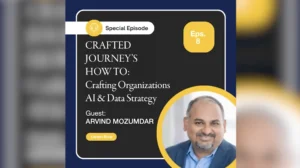Top Executives Want AI Enterprise Automation. Here’s Why Domain-Specific Solutions Are the Way to Go.
AI tools were envisioned to soak up the tedium in our days. With surprising accuracy and verisimilitude, AIs like ChatGPT are able to send emails, sort data, and automate repetitious tasks far more efficiently than people can. And this is a good thing, especially if it opens us up to spend more time with creative problem-solving and decision-making as business professionals. When taken at enterprise scale, AI enterprise automation could overhaul how companies function day to day. A recent enterprise automation study from the International Data Corporation found that AI enterprise automation is a top choice for companies looking to implement sustainability efforts; of the 800 global executives interviewed in the survey, 54% said they’re “already using enterprise automation technologies to help implement sustainability initiatives,” with an additional 24% saying they plan to deploy similar solutions over the next two years.
This is encouraging not only for the larger business climate stewardship community but for the AI enterprise automation space as well; companies are clearly eager for solutions that help create efficiencies in their operations and meeting their evolving KPIs. As AI enterprise automation further develops, what’s next in terms of functionality for that tech ecosystem, and should businesses seek solutions that are more tailor-made to their industry?
Trevor Francis, CEO and founder of global connectivity orchestration company 46 Labs, is carefully watching how AI business tools are developing in real time and gives his perspective on what’s next for AI enterprise automation and how business executives should be investing and deploying said solutions.
Trevor’s Thoughts
“What’s next for enterprise automation? I think that enterprise automation and AI will become synonymous, and I think that enterprises are going to follow kind of two separate paths with their application of AI. The first is a natural language model-based AI that’s leverages tooling like ChatGPT to replace human to human interaction.
The applications within the enterprise here are extraordinary. In the contact center space, in customer support, in document review, kind of anything that follows a natural language or dialogue-based flow apply this type of AI model.
The other is decision making-based AI, and this AI is more narrowly focused. It’s domain specific to a particular workload and it’s generally trained using best practices within that particular domain. So, the applications for enterprises here center around automation of IT workloads, security, connectivity management, network management, anything that requires an automated decision based upon best practices fit within this model.
Now, for enterprises to be successful in either model, they have to have kind of two separate things. First, they have to have a grasp of what the privacy considerations are for training these models. And the other is a kind of a clear understanding of which workloads you want to apply to which model.
If enterprises have a full grasp of these two things, they can be considerably more successful in kind of their launch of enterprise automation and AI in the future.”
Article written by Graham P. Johnson.








